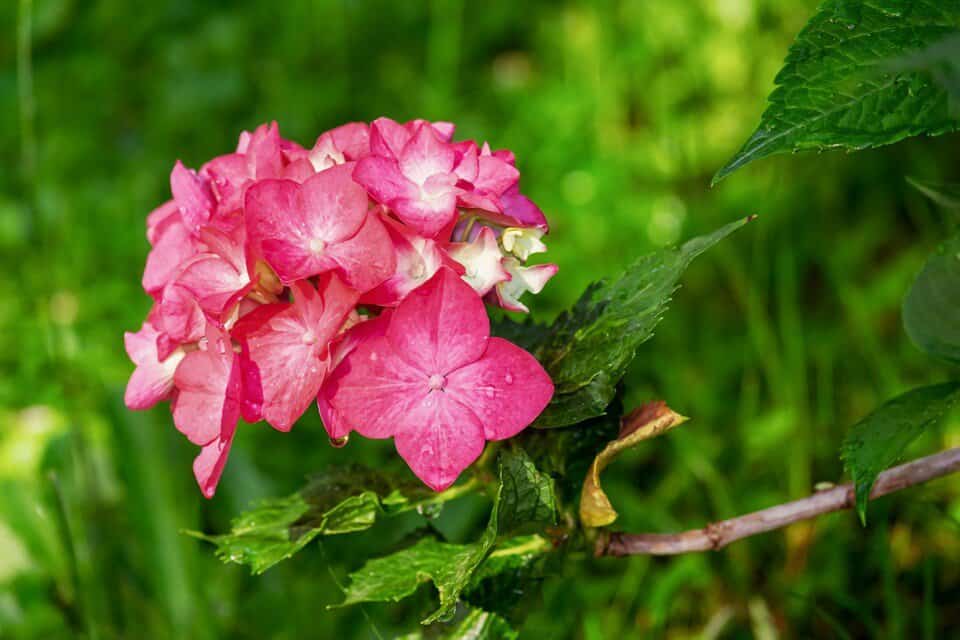Some links in the post are affiliate links and I get a commission from purchases made through some links found in the post.
Are you a plant lover then? What is your favorite plant? If it’s hydrangea, read this article. This will enable you to learn each and everything about the plant.
How to care for, how to maintain. As implied by its name, derived from the Greek word for water, hydrangeas are extremely water-sensitive.
But this does not mean they need more or less water than other plants. Instead, they are more sensitive to drought than other plants.
This makes hydrangea an excellent indicator plant in the landscape. Wilting of hydrangeas, especially those planted in areas with excessive sunlight, is expected during the afternoon.
A gardener should know that they must apply more water if their plants continue to wilt the next day. The plants may begin to decline if you do not provide them with irrigation as soon as they notify you that they require it.
If anything, this feature should be considered an advantage rather than a drawback. It’s hard to think of another plant that does this for us gardeners!
Can you Grow Hydrangeas in Florida?
The Oakleaf Hydrangea is an excellent choice for a hardy, multipurpose native shrub to grow in Florida. It prefers rich, moist soil and does well in full sun and partial shade.
The hydrangea can quickly grow to a height of 6-10 feet and a width of 6-8 feet due to its rapid growth rate. It is an excellent border shrub used in mass or as a single focal point.
Characteristics
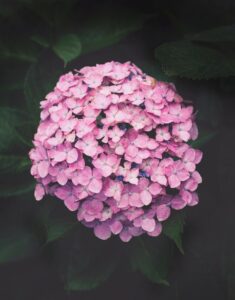 The leaves are large and hairy, resembling the stems of an oak tree. Blooming happens in the spring or summer, with
The leaves are large and hairy, resembling the stems of an oak tree. Blooming happens in the spring or summer, with
Large white to pink panicle flowers that develop at the tips of branches. This plant’s fall color, which can be challenging to achieve in our region, is one of its most delicate characteristics.
The shrub has peach-colored bark with a peeling texture, so it remains visually appealing even when its leaves fall off in the winter. Even the flowers that survive the winter as hard, lacy brown “skeletons” of their previous brilliance.
Management
None of Oakleaf Hydrangea’s diseases or pests are severe. Insects and leaf spots are tolerated by the plant and don’t detract from its beauty, so don’t worry about them!
It can grow a bit lanky; thus, pinching back the new growth at the end of the stems can promote more branching. Pruning should only be done after the plant has finished flowering, but resist the urge to cut it back.
Best Time to Plant Hydrangeas in Florida?
As with most things in your yard, grasping the basics of growing hydrangeas can save you time and money.
By choosing the ideal place, getting the soil right, and planting correctly, you’ll boost your chances of enjoying enormous, colorful hydrangea flowers for years to come.
Light and moisture are the most crucial variables when determining where to plant hydrangeas. Place them where they will receive morning and afternoon shade in the southern hemisphere.
Under these conditions, you can grow French (sometimes called bigleaf) hydrangea or panicle hydrangea. In northern regions, these identical species of hydrangeas will grow in the all-day sun.
‘Hydra’ is a root word in the name hydrangea, indicating how much water it requires. Make sure your location is near a water source before you begin construction. French hydrangeas, in particular, necessitate the most moisture to thrive.
How to Grow Hydrangeas in Florida?
Hydrangeas are best planted in the fall and early spring. Before flowering, the shrub needs plenty of time to establish a robust root system. Sowing seeds in the early morning or late afternoon is the best time of day.
Heat stroke is less likely to be a problem if you avoid the hottest parts of the day. Keep new plants well-watered until they’ve had a chance to grow into their full potential.
Where to Plant Hydrangeas
Knowing where to grow hydrangea shrubs is a crucial first step. Many people grow hydrangeas in gardens near their homes or fences.
This is because hydrangeas adore the warm early sun, but they loathe the afternoon’s heat. The ideal location for hydrangea planting is in a shady spot that receives morning sun and afternoon shade.
You’ll typically find this on the north or south of your property. To avoid competition for water and nutrients, avoid planting near trees. High winds can shred and damage foliage and kill the flowers.
The Best Soil for Hydrangeas
Hydrangeas grow well on soil having a lot of organic substances. Good drainage is crucial. While hydrangeas like damp soil, they cannot withstand being saturated.
The root can be caused by wet, poorly draining soils. In a matter of weeks, your hydrangeas may perish. Consider incorporating a large amount of compost into heavy soil before planting to increase its quality.
How to Plant Hydrangeas
Create planting holes 2 feet wider than the root ball for hydrangeas before you grow them. Keep the hole depth proportional to the size of the root ball so that the plant is level with or above the surrounding soil.
You can improve water drainage away from the plant’s base by creating a small mound.
How to Propagate Hydrangeas
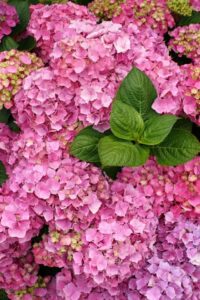 Easy propagation techniques can multiply a single hydrangea into a large population. Early to mid-summer is the ideal time to layer bigleaf and panicle hydrangeas for propagation. All that is necessary is:
Easy propagation techniques can multiply a single hydrangea into a large population. Early to mid-summer is the ideal time to layer bigleaf and panicle hydrangeas for propagation. All that is necessary is:
Dig a small trench near your hydrangea plant with six to twelve inches of the branch extending beyond the trench, bend an extension so that it’s middle touches the soil (six to 12 inches of the branch should extend past the channel).
Make slits in the bark where the stem meets the trench soil. On top of the filled-in trench, add pavers, bricks, or stones.
Once the branch has established its roots, it can be moved to a new location. Hydrangeas with smooth and oakleaf leaves produce new shoots via underground stems.
Simply excavate the young plant and remove it from the main plant. The plant can then be moved to a new place.
How Much Sun do Hydrangeas Need in Florida?
Hydrangeas depend on the sun for their growth. In the same way that too little light can harm these plants, excessive sunlight can do the same.
This is a common gardening worry that needs a full explanation. Hydrangeas need 4-6 hours of daily sunshine. Hydrangeas can tolerate full shade in some climates, but this is climate-dependent.
Can you Grow Hydrangeas in Pots in Florida?
Hydrangeas in foil-wrapped pots can be a beautiful gift for a few weeks before they die of neglect. This may lead you to believe that hydrangeas are unsuitable for container plants.
Most hydrangeas given as gifts in pots fail to grow because they are kept indoors for too long. Others perish because they were raised in a greenhouse; even if planted outside, they are not cold-resistant in your region.
However, hydrangeas may be wonderful container plants if you make the proper selections. Here’s what you need to know.
Hydrangeas are easy to grow in containers. Hydrangeas can be grown in planters by following the usual hydrangea care instructions.
Whether planted in the ground or pots, hydrangeas need three things to thrive: well-drained soil, adequate sunlight, and plenty of water.
If you’ve ever received a hydrangea in a foil-wrapped pot as a gift, you likely enjoyed it for a few weeks before observing its demise.
This may lead one to believe that hydrangeas are unsuitable for container plants. Because they are confined indoors for too long, most hydrangeas gifted in pots fail to grow.
Others perish because they were raised in a greenhouse; even if planted outdoors in your region, they are not cold-hardy.
However, hydrangeas may be excellent potted plants if you make the proper selections. Here is what you should know.
Planting Hydrangeas in Pots
Choosing a suitable container is the first step in planting hydrangeas. Because its vigorous roots quickly fill smaller containers, hydrangeas do not thrive in smaller containers.
In addition, smaller containers dry out too soon for what hydrangeas prefer. A planter should generally be at least 2 feet wide and medium to large in size.
Once you have selected the planter, you must ensure that the bottom has drainage holes. This is necessary for growing hydrangeas in containers, as the roots will rot if there is insufficient drainage.
In addition, we prefer to add a layer of rocks to the bottom of the basin to help it drain. Drainage is the most essential factor for plant health.
Soil
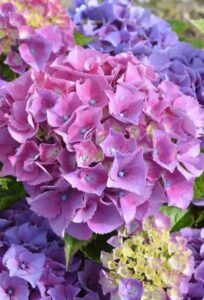 Next, you will need to get soil designed explicitly for planters. Sometimes dirt doesn’t drain well enough in pots. Add compost to the soil to increase its nutrient content.
Next, you will need to get soil designed explicitly for planters. Sometimes dirt doesn’t drain well enough in pots. Add compost to the soil to increase its nutrient content.
Plant the hydrangea at the same depth as before. Allow a space of at least 2 inches between the soil’s surface and the planter’s rim when planting.
As a result, watering the planter is no longer a problem. Remove any air pockets around the plant by gently pressing down the dirt around it. This will help the plant stay firmly in its pot.
- Hydrangeas should be watered thoroughly when the top inch or so of the potting mix feels dry. However, going underwater is preferable to floating on top of the water. The wilting of hydrangeas is a sign that they need a drink, so check them daily. Eventually, you’ll get the hang of how frequently to water. Drought or extreme temperatures may necessitate an increase in watering.
- Hydrangeas require only a small amount of fertilizer. You can use a slow-release balanced fertilizer, granular fertilizer, or commercially composted manure. It is best not to fertilize after July or August if you live in a hot area. For northern gardeners, the months of June and July are ideal because they only need to fertilize once during this period. As the plants prepare to go dormant, feeding hydrangeas later in the season encourages more delicate, new growth, which is ideal.
Caring For Hydrangeas in Pots
Hydrangeas are planted and cared for like shrubs. Be sure the placement of the hydrangea fulfills the growing needs of the kind that you have.
Most hydrangeas like the morning sun, providing afternoon shade to protect the plant from intense direct sunshine on hot summer days.
This minimizes the frequency with which you will need to water the plants. However, some hydrangeas require shade and thrive in direct sunlight. Therefore, knowing the requirements of the type you are cultivating is beneficial.
Watering hydrangeas in planters is the second most crucial step after providing enough drainage. The watering frequency will depend on factors such as the planter’s size, the plants’ size, and the weather outside.
At least twice every week, you will need to water hydrangeas in containers. However, this can change based on the variables above.
The drooping of a plant’s leaves is a reliable indicator that it needs water. This is the most reliable sign that the shrub requires additional moisture.
After ensuring enough drainage, watering hydrangeas in containers is the second most crucial step. Several factors, including the planter’s size, the plants, and the external climate, will determine the watering frequency.
Typically, hydrangeas in containers require watering at least twice each week. However, the conditions mentioned above could change this.
The plant’s drooping leaves are a great indicator that it needs water. The best way to tell if the shrub needs extra water is by looking at the leaves.
Fertilizing hydrangeas in planters should be done in late winter or early spring. After ensuring enough drainage, watering hydrangeas in planters is the second most crucial step.
The watering frequency will depend on various factors, including the farmer’s size, the plants’ size, and the external climate.
You should generally water hydrangeas in containers at least twice each week.
However, this could alter based on the parameters indicated above. Leaves that are drooping are a great indicator that a plant needs water. This is the most reliable indication that the shrub requires additional moisture.
Caring for Potted Hydrangeas in Winter
In colder climates, your planter-grown hydrangeas may require additional care. Around the planter’s edges, the roots are more visible.
If you wish to learn more about protecting hydrangeas over the winter, we have compiled a guide. Another alternative is to store hydrangeas in containers in the garage over the winter.
There is no risk of extreme freezing or windy conditions affecting the plants.
How to Care for Hydrangeas in Florida in Winter?
The hydrangea’s winter care will determine how well it blooms next summer and how many blooms there will be. Protecting your hydrangea from the first frost of winter until the last ice of the following spring is essential for its winter survival.
This goes for both containerized and ground-planted varieties. When it comes to taking care of your hydrangea in the winter, here is a guide.
One can already feel the change of seasons with a noticeable chill in the air. Soon it will be time to put the garden to bed.
Long-season hydrangeas provide large, gorgeous blooms. They’re generous. Give back. Time to tuck in hydrangeas with goodnight kisses and sweet dreams.
Winter weather in Florida can be as unpredictable as our moods when we’re deficient in vitamin D and suffering from cabin fever, including snow accumulation and freeze/thaw cycles.
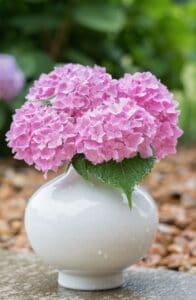
However many hardy hydrangeas may be, all this can throw them into a spin. To make it through the winter and come back even better the following year, they’ll need some TLC.
If you live in an area where the hydrangeas require less post-season priming than they do in our zone, you’d be hard-pressed to find anyone who wouldn’t appreciate some extra attention.
The best way to winterize your hydrangea plants is by pruning them back to the ground. Proper hydrangea winter care will determine the success and quantity of the flowers next summer.
From the first frost to the last spring ice, disconnecting your hydrangea plant’s dead connections to the source is crucial. Keep your hydrangea in mind when cutting down healthy wood, as this wood will be where it blooms next year.
In-ground Hydrangeas
During the winter months, you’ll want to use stakes to create a protective frame around your in-ground hydrangea in the dead of winter.
A cage can be made by encircling the stakes with chicken wire. To ensure your plant is completely protected from the elements, stuff the cage to the brim with pine needles and/or leaves.
Because they don’t settle as quickly as other materials, oak leaves work well. As the winter settles in, replenish the cage with a bag of leaves from your fall leaf raking pile.
To avoid wasting your time and effort, be careful not to snap off the tops of the branches as you fill the cage.
Potted Hydrangeas
Winter Protection, The best hydrangea winter protection for potted plants is to bring them inside before the first frost.
If they are too heavy to carry, they can be left outside and protected by covering the entire pot and plant. To preserve your potted plants, one method is to utilize foam insulation.
Importance of Hydrangea Winter Care
It can seem like a lot of work to figure out how to preserve hydrangeas from the winter wind and cold.
However, once you’ve established your plant’s winter home, the remainder of the winter only will require a little housekeeping to maintain successful hydrangea winter protection.
Don’t Stop watering
Take the pledge! Raise your right hand and say, “I will water my hydrangeas until the ground freezes solid.” Very good. It’s vital to water hydrangeas profoundly and consistently as they are naturally thirsty plants.
We don’t need to get too nerdy with Latin to understand what they mean by their name, though. Hydrangeas don’t use lip balm because they don’t need it in the winter.
It doesn’t have to be sweltering hot to dry. Water thoroughly but infrequently based on rainfall in locations that don’t freeze.
Do Hydrangeas Bloom all Year in Florida?
An annual plant that produces flowers with large, pastel-colored blooms is known as a hydrangea. Regarding growing hydrangeas, Orlando’s sandy soil presents a problem.
Hydrangea macrophylla, often known as Bigleaf, French, or Florist’s hydrangea, is recommended by University of Florida agriculturists for Orlando gardeners.
It’s worth considering the Endless Summer variety. The best times to see hydrangea in Orlando are late spring and early summer.
Make sure your hydrangea gets enough light. Plant the hydrangea in a shady spot in the afternoon if you want to enjoy it in the hot afternoon sun.
Hydrangea Care Tips
Despite their delicate-looking leaves and blooms, Hydrangeas do not require special attention. To properly care for your hydrangeas, follow these guidelines.
Keep the soil around your hydrangeas moist and cool by mulching. In the long term, organic mulch breaks down to release nutrients and enrich the soil.
Use a fertilizer that is suited to your hydrangeas. Varieties have different needs and require different application schedules. Crops’ suitability can only be determined through a soil test
Final Thoughts
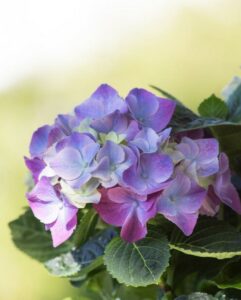 Cultivars with disease- and pest resistance traits are the best bet. Hydrogen blight, wilt, and powdery mildew are all hydrangea leaf spot disease symptoms.
Cultivars with disease- and pest resistance traits are the best bet. Hydrogen blight, wilt, and powdery mildew are all hydrangea leaf spot disease symptoms.
Usually, hydrangeas do not have pests, but pests can appear at times of stress for the plants. The aphids, leaf tiers, and red spider mites are potential pests.
Your most incredible line of defense is to give your hydrangeas the attention and care they need.
Check to see where the hydrangea will be planted has good drainage. Hydrangea loves water, but its roots can suffer if constantly saturated.
During the hottest summer portion, keep the soil moist but not waterlogged. Allow the soil to dry to a depth of 1 inch on different occasions.
These environmental requirements allow bigleaf and mountain hydrangeas to thrive in northern and central Florida.
However, careful site selection and plant care become more important as the plant is planted further south.
Most hydrangeas flourish in fertile, well-draining soils with sufficient rainfall. Compost should be added to poor soil to improve it.
Hydrangeas, in general, prefer partial sun. Ideally, they will be exposed to direct sunlight in the morning.

